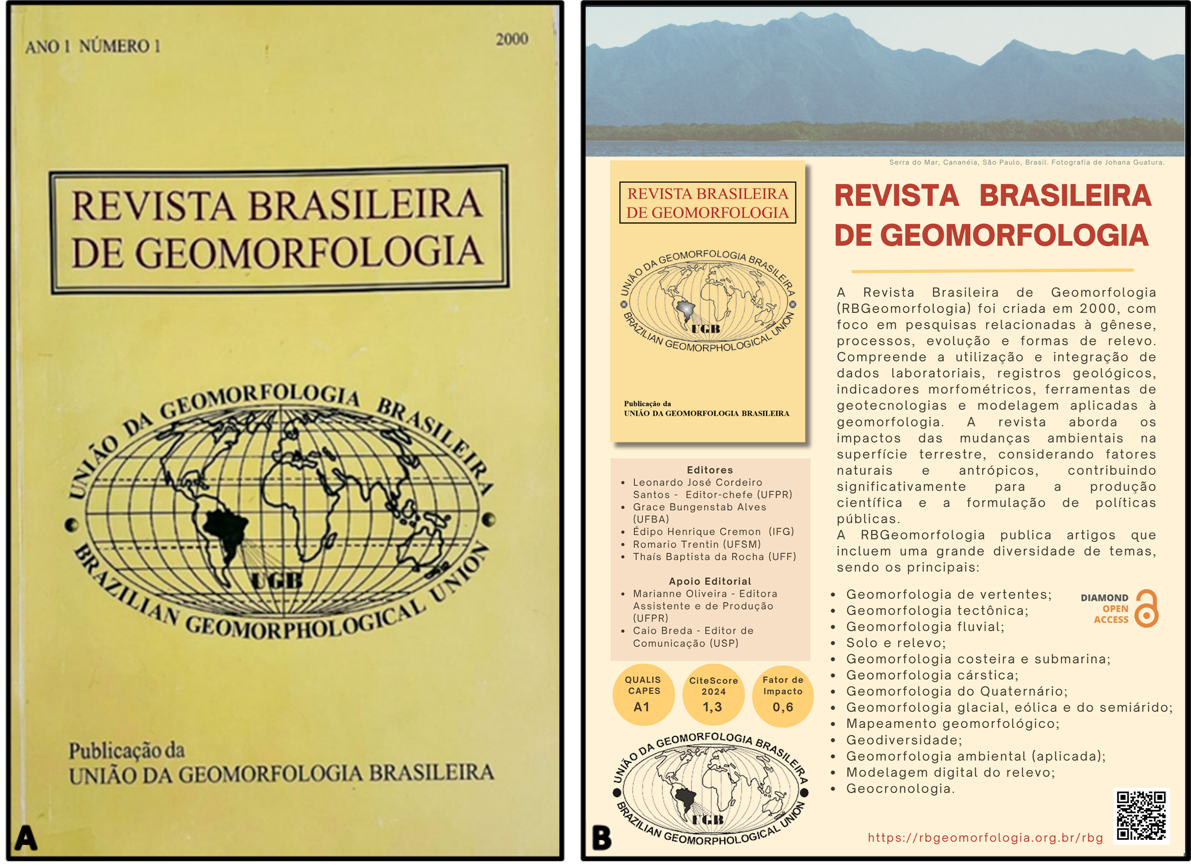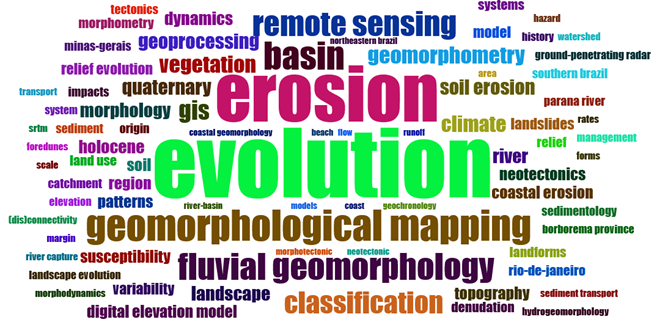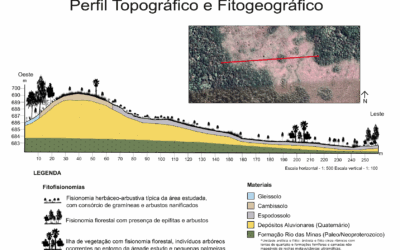Bibliometric analysis reveals 25 years of evolution, challenges, and opportunities of Brazil’s leading geomorphology journal.
The Revista Brasileira de Geomorfologia (RBGeomorfologia) celebrates 25 years as the main scientific platform for geomorphological research in Brazil. Founded in 2000 by the Brazilian Geomorphological Union (UGB), the journal has accompanied the maturation of the discipline and has become a national and international reference in understanding landforms and their environmental interactions.
A recent study published in volume 26 (2025) of the Revista Brasileira de Geomorfologia, titled “Revista Brasileira de Geomorfologia (Brazilian Journal of Geomorphology): Past, Present, and Future”, presents an unprecedented analysis of the scientific output published between 2000 and 2024. The research was conducted by Leonardo José Cordeiro Santos (UFPR), Caio Breda (USP), Grace Bungenstab Alves (UFBA), Édipo Henrique Cremon (INPE), Romario Trentin (UFSM), Thaís Baptista da Rocha (UFF), and Inocencio de Oliveira Borges Neto (UFPR).

Figure: Visual trajectory of RBGeomorfologia. (a) Cover of the first issue of the Revista Brasileira de Geomorfologia, published in 2000; (b) Brochure of the journal from 2025, including its main publication areas.
Based on data from Web of Science and Scopus, the study applied bibliometric methods to evaluate the journal’s temporal evolution, collaboration networks, and thematic trends. More than 700 articles and technical notes were analyzed, revealing consistent growth in Brazilian geomorphological research and its increasing international reach.
Key findings include:
-
Predominance of Environmental (Applied) Geomorphology, followed by Modeling and Geoprocessing, and Fluvial Geomorphology;
-
Expansion of international collaboration networks, with partnerships in 12 countries — notably France and Portugal;
-
Increased institutional diversity, with UFMG, UFRJ, UNESP, UFF, and USP among the most productive institutions;
-
An average of 2.7 citations per article, reinforcing the journal’s consolidation in international databases.
The study also points out future challenges, such as the need to strengthen underrepresented subfields like Geodiversity, Geomorphological Heritage, and Geochronology. These areas represent opportunities for scientific expansion and interdisciplinary collaboration.
According to the authors, RBGeomorfologia “reflects the evolution of the discipline by incorporating new methodologies and promoting debate on key themes for understanding and applying geomorphological knowledge in Brazil and worldwide.”
🔗 Read the full article: Brazilian Journal of Geomorphology: Past, Present, and Future
🔗 Versão em português: Revista Brasileira de Geomorfologia: Passado, Presente e Futuro




